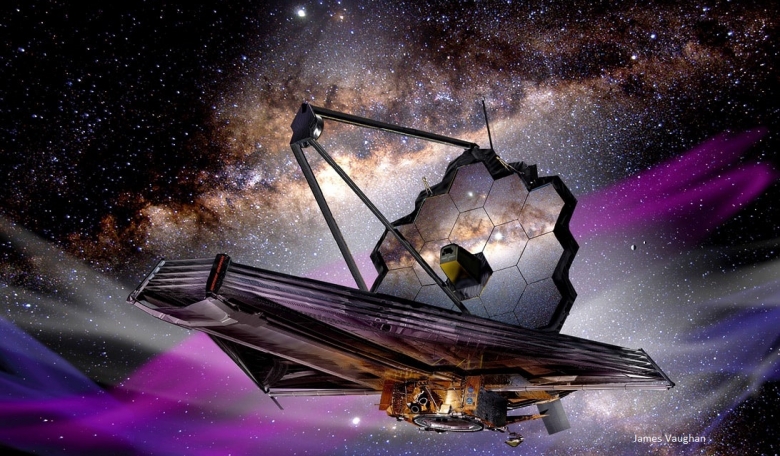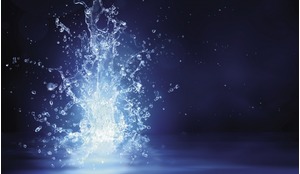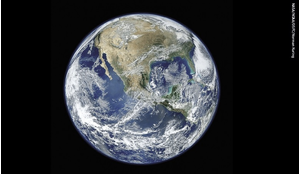A joint venture between the American, European, and Canadian Space Agencies (NASA, ESA, and CSA), the James Webb Space Telescope (JWST) is close to starting its mission to revolutionise our understanding of the cosmos. An engineering marvel, its daring and novel origami-style launch configuration was a colossal but unavoidable risk that has, so far, proved worthwhile, paving the way for future gigantic space observatories. Now over a million miles from Earth, the telescope is preparing for up to 20 years of deep-space observations. JWST will peer at the hidden infrared universe, touching on almost every branch of astrophysics, from unveiling the light of the very first stars and galaxies to hunting for possible signs of life around nearby worlds. Although we have planned extraordinary science, we cannot imagine the universe the James Webb Space Telescope is about to reveal.
WST is not ‘Hubble’s Replacement’ but ‘Hubble’s Successor’, designed to build on Hubble’s rich legacy and even to work side-by-side with the ageing telescopic powerhouse. Despite appearances, Hubble and JWST are both the same basic type of telescope. Light is collected by a large primary mirror, which is directed to a smaller, secondary mirror before being sent through a hole in the centre of the primary mirror to the instruments. However, this is where the similarities end.
Although Hubble has some ultraviolet and infrared capability, it is primarily a visible-light telescope, detecting the same part of the electromagnetic spectrum as our eyes. Conversely, JWST is almost exclusively dedicated to seeing infrared light - longer wavelength, less energetic forms of light beyond the red end of the rainbow (though it can pick up a little red light). We cannot see infrared light, but our skin can sense it as heat.
Choosing to have the next flagship space-based observatory not see the same Universe as us might seem strange. Although Hubble was an astonishing achievement, undoubtedly, the world fell in love with the telescope because of its treasure trove of colour-rich images. JWST’s pictures may not be in spectacular technicolour, but they will be scientifically dazzling due to the strange Universe we inhabit.
Ever since the Big Bang exploded the Universe into existence some 13.8 billion years ago, the Universe has been expanding, swelling like a giant balloon. Everything is moving further away from everything else - the space between galaxies is stretching, increasing year on year. Combined with the finite speed of light this wonderfully, serendipitously, turns our Universe into a time machine.
Its daring and novel origami-style launch configuration was a colossal but unavoidable risk that has, so far, proved worthwhile
Just as it takes time for us to walk to the shops, it takes time for light to travel through the Universe. It’s quick, the quickest thing in the Universe, but it still takes time. As light travels through this expanding Universe to reach us, it is not immune to this stretching - its wavelength slowly increases. Light from the first stars and galaxies may have been emitted at wavelengths we could see with our eyes, but now the light has been shifted beyond the red end of the visible spectrum, deep into the infrared - invisible to Hubble but exactly poised for JWST.
Another motivation for selecting an infrared space telescope comes from our recent advances in the field of exoplanets; worlds orbiting other stars. With over 5000 known exoplanets, we are progressing from the Era of Discovery to the Era of Understanding, ready to characterise these worlds and search for possible signs of life. Just like humans, exoplanets glow brightly in the infrared. Additionally, their host stars are comparatively dimmer in the infrared, making picking up elusive photons from exoplanets much easier at these longer wavelengths.
Finally, as beautifully illustrated by Hubble, shorter-wavelength infrared light allows us to peer through clouds of gas laced with cosmic dust (tiny solid grains that pervade gas clouds like smoke), revealing the otherwise hidden world of star formation.
However, longer infrared wavelengths, like those seen by NASA’s previous infrared telescope Spitzer, allow us to see the light emitted by cool cosmic dust grains, which disproportionately impact how we view the cosmos. Despite accounting for just one-thousandth the mass of a typical nearby galaxy, cosmic dust has absorbed around half of the starlight ever emitted in the Universe, re-radiating it deep into the infrared. By not studying cosmic dust, we miss out on literally half of the Universe. Cosmic dust is the building block of rocky planets like Earth, and JWST will help us unlock its secrets.
Nevertheless, observing at infrared wavelengths is not without its problems. Firstly, a large mirror is required to ensure good resolution. At 6.5 metres across, one might think that JWST’s giant mirror will allow us to see more detail than ever before. However, resolution is also impacted by the observation wavelength. Combined, these factors mean that JWST will see approximately the same level of detail as Hubble, but in a completely different part of the electromagnetic spectrum. Compared to Spitzer, JWST will see around 15 times more detail.
Although higher resolution will prove revolutionary, building such a large mirror required astonishing feats of engineering. To avoid sagging under its own weight, JWST’s mirror needed to be made of 18 smaller segments - hexagonal, as this shape has a high filling factor, allowing engineers to get close to the ideal circle with minimal wasted space.
Each mirror segment is made of beryllium coated with a thin layer of gold just 700 atoms thick, ensuring good reflectivity in the infrared. Beryllium is light, strong, and can hold its shape across a range of temperatures - important considering the segments were built at room temperature, but the telescope will operate at around -230C. Each mirror is equipped with seven actuators to achieve perfect focus. Six tip and tilt each piece, and a seventh central one can slightly bend each segment, allowing mirror alignment to within 1/10,000th the width of a human hair. Six of the segments, forming two ‘wings’ needed to be folded for launch as no rocket fairing was big enough to house the full mirror.
Cosmic dust is the building block of rocky planets like Earth, and JWST will help us unlock its secrets
The second complication for infrared telescopes is temperature. Unless cooled, their instruments and detectors are swamped by their own heat, rendering them useless for astronomy. Nearly all of JWST is passively cooled using a massive five-layer tennis-court-sized sunshield made of modified Kapton, the film that gave the lunar module its iconic golden colour. Added to the Kapton is highly reflective aluminium and silicon, excellent at radiating away heat. Layering utilises the insulating properties of a vacuum, and the diamond shape is motivated by engineering rather than aesthetics - it maximises cooling while minimising the amount of material required, reducing weight for launch. Every two metres or so are bonded seams, so if a micrometeoroid causes a small tear, it won’t rip across the entire sunshield layer. The outermost layer is also twice the thickness of the others for added protection. Like the primary mirror, this enormous sunshield had to be folded for launch, with over 100 pins holding it in place. All had to deploy successfully to release the sunshield, which, thankfully, they did, during its one-month journey to its operation destination.
Keeping the telescope cool is the primary motivation behind JWST’s remote location, some four times the distance between the Earth and the Moon, at a reasonably gravitationally stable point known as Lagrange Point 2 (L2). Thanks to an extra gravitational boost from Earth, objects placed at L2 take the same amount of time to orbit the Sun as Earth, so they remain in constant communication. However, L2 is only quasi-stable, with observatories requiring minor orbit corrections to stay in place.
Typically, telescopes do not sit directly at L2 but orbit the point. Although being at L2 means we can always block out the infrared light of the Sun, Earth, and Moon, sitting exactly at L2 would see Earth eclipse the Sun, removing the telescope’s power source. Instead, JWST slowly orbits L2 on a 6-month loop, keeping its sunshield back to the Sun and staring out into the cosmos, with a little over half the sky available to it at any given time.
Instruments
JWST is equipped with four main instruments, a combination of imagers and spectrometers, which split light into its constituent parts like a rainbow, allowing us to determine the composition and distance of objects. The Fine Guidance Sensor/ Near InfraRed Imager and Slitless Spectrograph (FGS/NIRISS) can be used for science, but its primary function is to ensure that JWST points to targets precisely and tracks them flawlessly. It works with the Attitude Control System (sensors, gyroscopes, and reaction wheels) to control the telescope’s orientation.
The Near Infrared Camera (NIRCam) is JWST’s primary near-infrared (short wavelength) imager, passively cooled by the sunshield. One of the significant innovations of NIRCam is its ability to examine two nearby patches of sky at two different wavelengths simultaneously, which is extraordinarily exciting for studying rapidly changing transient events. It is equipped with dozens of filters and also some coronographs, used to block out stellar light when studying exoplanets.
NIRCam was used to initially focus the telescope, part of the ongoing six-month commissioning phase, which began at the end of January. Even though it was purely designed with engineering in mind, not science, the returned image sent shockwaves around the world. Centre stage is a pin-sharp star, with large diffraction spikes caused by reflections off the three struts holding the secondary mirror in place and smaller ones caused by the edges of the segmented mirror. However, the background hides the true cosmic treasures - hundreds of previously undiscovered galaxies, their stellar light shifted into the infrared by the Universe’s expansion. All this serendipitous science before all the instruments have even been brought online.
Complementing NIRCam is the Near Infrared Spectrograph (NIRSpec), which splits light into its constituent wavelengths for object characterisation. NIRSpec will prove invaluable for understanding the atmospheres of transiting exoplanets, which appear to pass in front of their parent star as seen from Earth. A recent development included on NIRSpec is Integral Field Spectroscopy, where each pixel in an image contains a spectrum. This extraordinary tool allows astronomers to determine the composition of each part of a galaxy or nebula, helping them understand the complex features of these cosmic structures. However, the most revolutionary tool on NIRSec is the multi-object spectrometer, equipped with 250,000 microshutters, each the width of a human hair. Each shutter can be individually controlled, allowing astronomers to block out the light of interfering bright stars or focus on specific objects.
The Mid-Infrared Instrument (MIRI) explores longer infrared wavelengths, further cooled to -265C using liquid helium. MIRI is an imager and spectrometer equipped with filters and coronographs, like NIRCam and NIRSpec. One of the most revolutionary aspects of JWST observing is that different instruments can be used simultaneously, greatly enhancing the amount of science the telescope can perform.
First year of science
With over 5000 known exoplanets, we are progressing from the Era of Discovery to the Era of Understanding, ready to characterise these worlds and search for possible signs of life
JWST’s first year of observations, dubbed Cycle 1, is split into four main categories. Calibration Programmes are conducted by those who built the telescope and instruments and are used to test and establish baselines. Similarly, a small portion (500 hours) is dedicated to the Director’s Discretionary Early Release Science Programmes, high-priority exploratory projects designed to help astronomers learn how to use JWST’s instruments, test different configurations and modes, and help researchers develop analysis software.
However, since these aren’t true scientific observations, those who helped build JWST are also allocated Guaranteed Time Observations, amounting to 3800 hours. Two projects will spend 150 hours using MIRI to explore the Hubble Ultra-Deep Field. Hubble stared at this almost empty patch of sky in the constellation Fornax for 11.5 days, revealing 10,000 galaxies stretching back through most of cosmic history. By using MIRI, astronomers hope to understand better the many varied galaxy systems in this part of the sky.
At the opposite end of the Universe, in our own Solar System, JWST will turn to the icy moons Europa (Jupiter) and Enceladus (Saturn), studying them for signs of submerged hydrothermal vents as part of our hunt for ‘life elsewhere’. Even tiny asteroids and comets won’t escape JWST’s watchful gaze. JWST will support the upcoming NASA Double Asteroid Redirection Test (DART), which will slam a probe into one of a binary asteroid pair, hoping to change its orbit just a little - practice for punching something away that’s headed for Earth. JWST will help characterise the system and also watch the impact from afar.
Finally, the largest chunk of observation time (6000 hours) belongs to the General Observer Programme, with projects proposed by the worldwide astronomical community. Many astronomers plan to study exoplanets, focusing on characterising the atmospheres of small rocky worlds orbiting small, reddish M-dwarf stars. Although the most abundant type of star in our galaxy, they are notoriously violent, with frequent flares. Astronomers hope to learn if their violent nature prevents orbiting planets from retaining a protective atmosphere.
Over 10 percent of the General Observer Programme is dedicated to studying the COSMOS field, a small patch of sky in the constellation Sextans used for studying galaxy evolution. Here, astronomers hope to detect the light from tens of thousands of new galaxies, some containing the very first stars in the Universe, helping them understand how galaxies formed and evolved.
Around June-July 2022, we can expect to see JWST’s first science image. Precisely what this will be is being kept under tight wraps. My bet is something iconic from Hubble, highlighting just how differently JWST views the cosmos. However, the most exciting scientific results will be the ones we cannot plan. Every time a new telescope turns its eyes to the skies, it reveals something wildly strange about the Universe, beyond our imagination. JWST has been a long time coming, and I cannot wait to see what it will discover.
About the author
Dr Jenifer Millard (@DrJeniMillard) earned her Astrophysics PhD from Cardiff University in 2021, officially making her a ‘Plague Doctor’. Although she loved studying ‘The Stuff Between the Stars’, during her studies, she realised her true passion lies in explaining scientific results, rather than finding them herself. An expert multi-platform science communicator, she is the Managing Editor of Fifth Star Labs Sky Guide App, co-host of the Awesome Astronomy podcast, and frequently appears on radio and BBC TV. Jeni loves to travel, but when border-bound, you can often find her cross-stitching, curled up with her cat.














